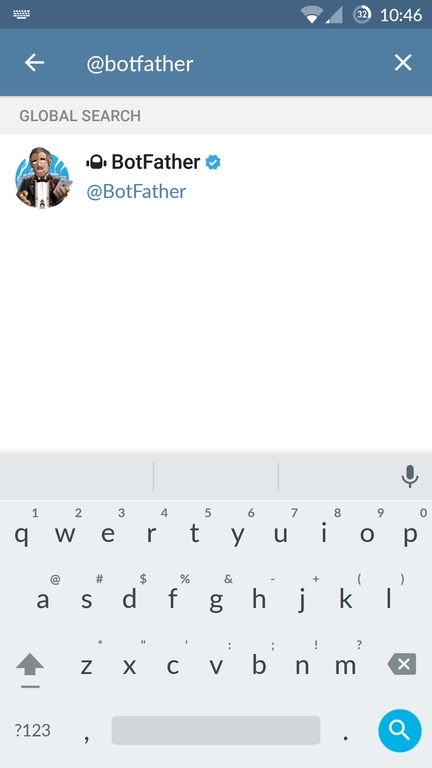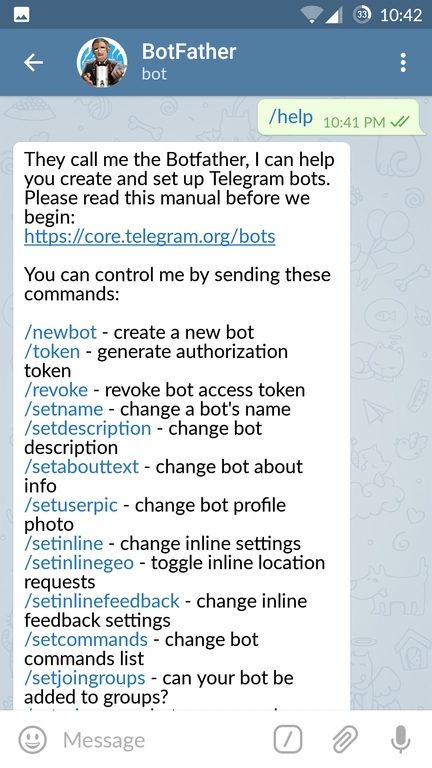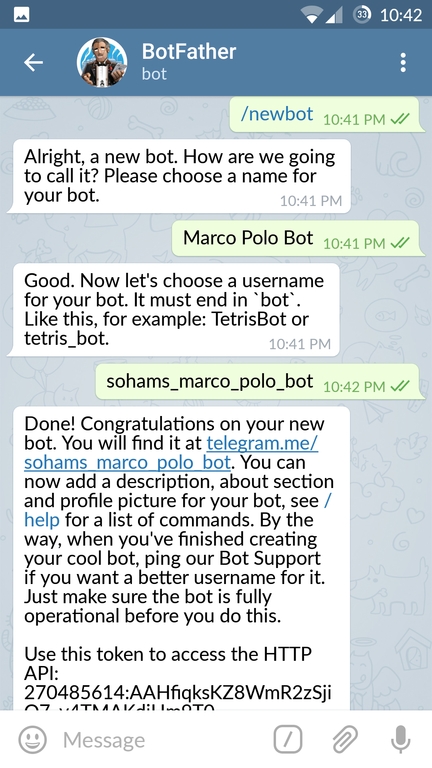Set up Telegram bot
Set up your Telegram bot
You don't have to neither write any code for this nor use your computer! Just go to the Telegram app on your device and complete 4 simple steps:
Step 1: Find telegram bot named "@botfarther", he will help you with creating and managing your bot.

Step 2: Print /help and you will see all possible commands that the botfather can operate.

Step 3: Create a new bot type /newbot or click on it.
Follow the instructions provided by him and create a new name to your bot. If you are making a bot only for experimentation, as it has to be a unique name, you can use namespace for your bot by placing your name before it in its username. By the way, its screen name can be anything you like.

Step 4: Congratulations! You've just created your Telegram bot. You will see a new API token generated for it. In sample above it's 270485614:AAHfiqksKZ8WmR2zSjiQ7_v4TMAKdiHm9T0
Step 5: Provide Ramper team with the Bot Token to setup authorization (ETA 1 business day)
Step 6: Ramper provides App Id for Bot Token
Step 7: Implement  npm: @ramper-v2/telegram-sdk
npm: @ramper-v2/telegram-sdk
Last updated